Embark on an exhilarating journey through the oceanic depths of superhero lore with “Aquaman & The Lost Kingdom.” This cinematic spectacle, led by the charismatic Jason Momoa as Arthur Curry – the heroic Aquaman – weaves a rich tapestry of Easter eggs and homages that honor its DC comic book roots, previous DCEU installments, and even rivals in the Marvel universe. Right from the opening scene, the film splashes with Aquaman majestically riding his trusty seahorse Storm, a delightful tribute to the classic comics and the beloved Super Friends cartoon.
As the story unfolds, fans are treated to creative remixes of comic storylines and subtle nods to Marvel, showcasing the film’s reverence for the broader superhero genre. Each Easter egg and reference in “Aquaman & The Lost Kingdom” is a testament to superhero cinema’s rich history and interconnectedness, making it a must-see for fans and newcomers alike.
Aquaman’s Seahorse Storm
The opening scene of “Aquaman & The Lost Kingdom” is a cinematic spectacle showcasing Aquaman’s prowess as he battles pirates. The standout element here is his giant seahorse, Storm, a direct homage to the character’s rich comic history and animated appearances. Storm in the comics and the Super Friends cartoon symbolize Aquaman’s royal status and connection to sea life.

The live-action version elevates Storm from a mere mode of transport to a majestic and formidable ally, showcasing advancements in visual effects and acknowledging the character’s evolution from a comic relief in the ’60s to a modern superhero. This scene effectively bridges the gap between nostalgic comic elements and contemporary superhero cinema’s high-stakes, visually stunning nature.
Batman’s Fish Joke
This scene refers to a lighthearted moment from 2017’s Justice League, where Batman humorously inquires about Aquaman’s ability to communicate with fish. The reference in “Aquaman & The Lost Kingdom” is a clever nod to the camaraderie and banter among the members of the Justice League, particularly highlighting the dynamic between Batman and Aquaman.
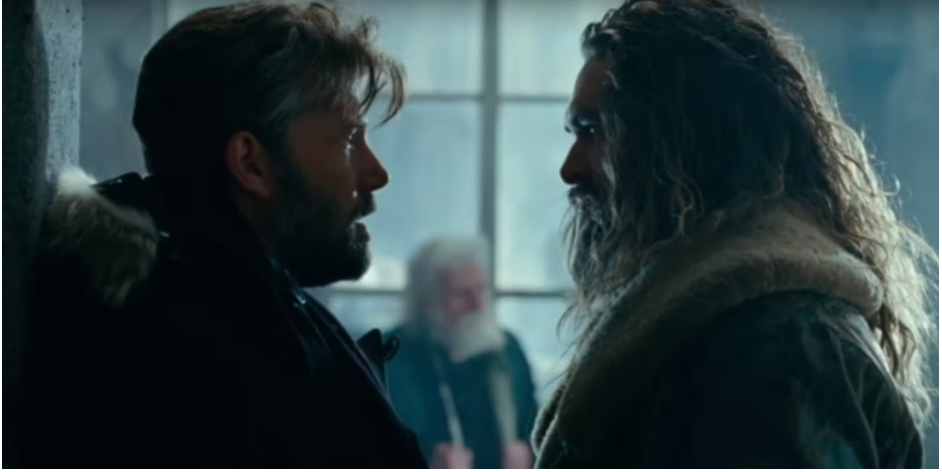
It serves as a reminder of Aquaman’s unique abilities, which, while often the subject of humor, are integral to his character and the narrative. This easter egg enriches the film’s universe, connecting it to the broader narrative of the DCEU and adding layers of humor and self-awareness to the character of Aquaman.
Arthur Jr. (The Aquababy)
Introducing Arthur Jr. in the film is a nod to the comics and a significant plot element that adds depth to Arthur and Mera’s characters. In the comics, the character of Aquababy (Arthur Jr.) is a symbol of the lineage and future of Atlantis but also of vulnerability, as his tragic fate at the hands of Black Manta adds a darker tone to the storyline.
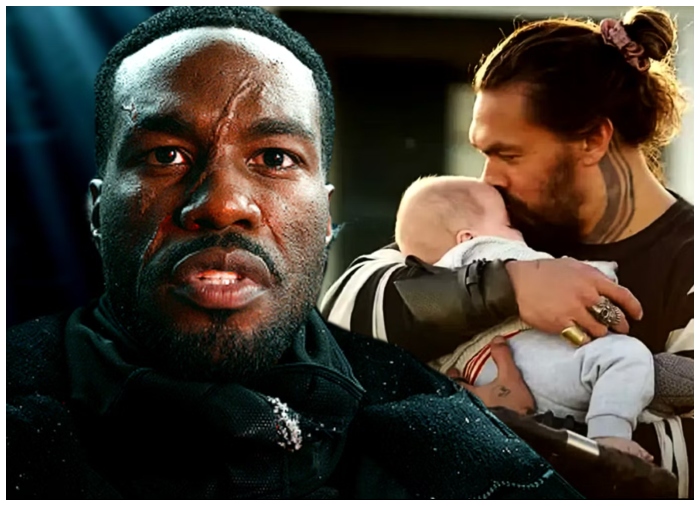
By including this character and the attempted replication of this event in the film, the storyline takes on an emotional gravity, reflecting on themes of legacy, protection, and the relentless nature of vengeance embodied by Black Manta. The inclusion of Arthur Jr. opens up new narrative possibilities, exploring the balance of superhero responsibilities with personal and familial duties.
The Lost Kingdom – Necrus, aka The Black City
Necrus, the Black City, introduces a complex and mystical element to the film’s plot. In the comics, Necrus is known for its elusiveness, appearing and disappearing unpredictably. The film reimagines this as a once-great kingdom now lost and corrupted, adding to the lore of the Atlantis mythos.
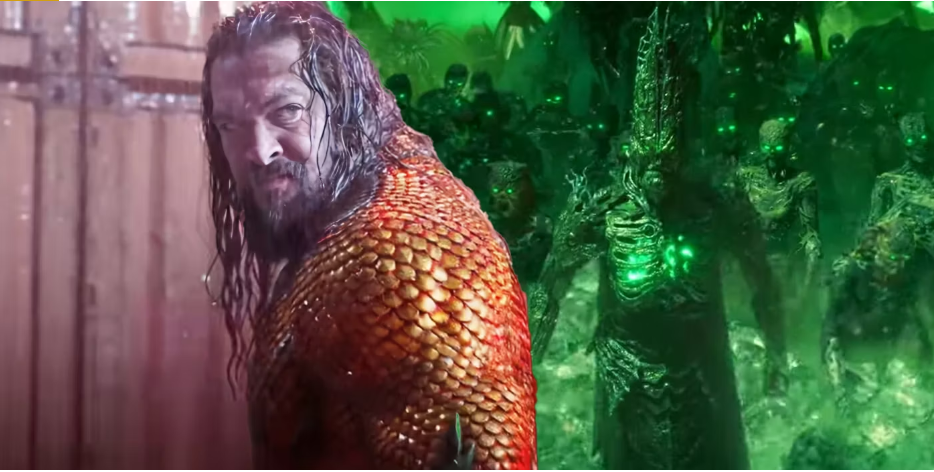
This adaptation of Necrus into a cursed and fallen kingdom enriches the narrative, providing a backdrop for Black Manta’s quest and the larger story of Atlantis’ past. It also adds a layer of intrigue and mystery as the characters navigate this forgotten and dangerous part of their world, drawing parallels with real-world myths of lost civilizations and their hidden powers.
Black Manta’s Black Trident And Orichalcum
The storyline involving Black Manta’s pursuit of Orichalcum is a clever intertwining of comic lore with contemporary environmental concerns. In the comics, Orichalcum is a rare and powerful metal. In contrast, the film elevates it to a source of ecological disaster, reflecting current global worries about climate change and environmental degradation.
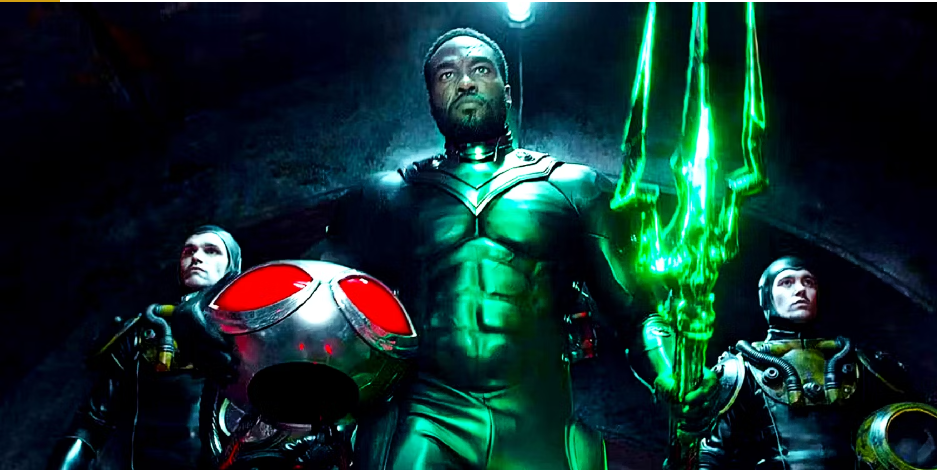
Black Manta’s use of this resource and the consequential ecological imbalance adds urgency and relevance to the narrative. This plot device serves as a metaphor for the misuse of power and the responsibility that comes with it, resonating with audiences in an era increasingly aware of environmental issues.
Aquaman’s Man of Steel Reference – Galaxy Broadcast Communications
Including Galaxy Broadcast Communications (GBC) is a subtle yet effective way to tie “Aquaman & The Lost Kingdom” to the wider DCEU. GBC, a major news network from the comics, creates a link to Metropolis and the world of Superman, specifically recalling its appearance in “Man of Steel.”
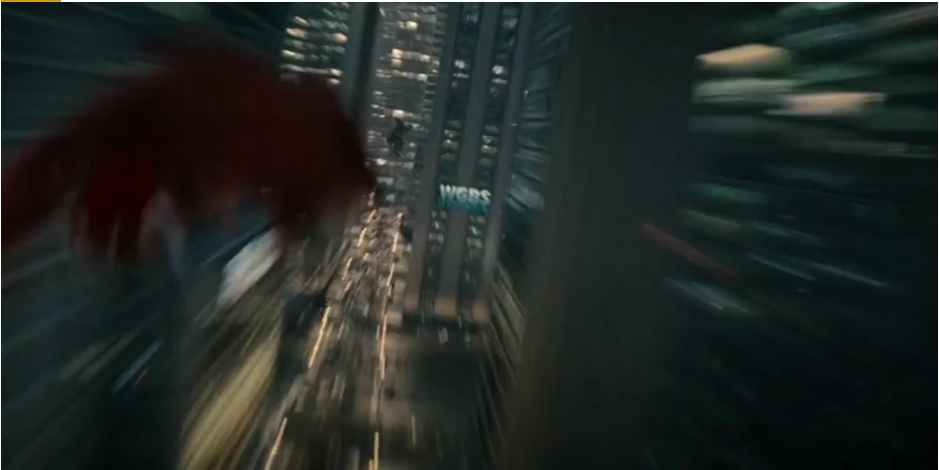
This reference serves as a nostalgic callback for fans and strengthens the interconnected nature of the DCEU. It reinforces the concept that these stories and characters coexist in a shared universe, enriching the viewing experience by creating a sense of continuity and depth in the world-building of the franchise.
Atlantean Council and Surface World Politics
The sequel delves into the complex dynamics of Arthur Curry’s kingship over Atlantis, revealing that his rule is scrutinized by a council, aligning with his comic portrayal. The movie brings to the forefront the political divide within the underwater kingdoms – a reflection of the surface world’s dichotomies.

Half of these kingdoms favor peaceful coexistence, while the other half leans towards aggression, echoing Arthur’s struggles in the comics where he often finds himself as the mediator preventing a global conflict. This subplot adds depth to Arthur’s character and mirrors real-world political tensions, making the narrative more relevant and compelling.
Aquaman’s Mentor Vulko
“Aquaman & The Lost Kingdom” addresses the absence of Vulko, portrayed by Willem Dafoe in the first film. The narrative reveals that Vulko succumbed to a plague, tragically linking his demise to humanity’s pollution of the oceans.
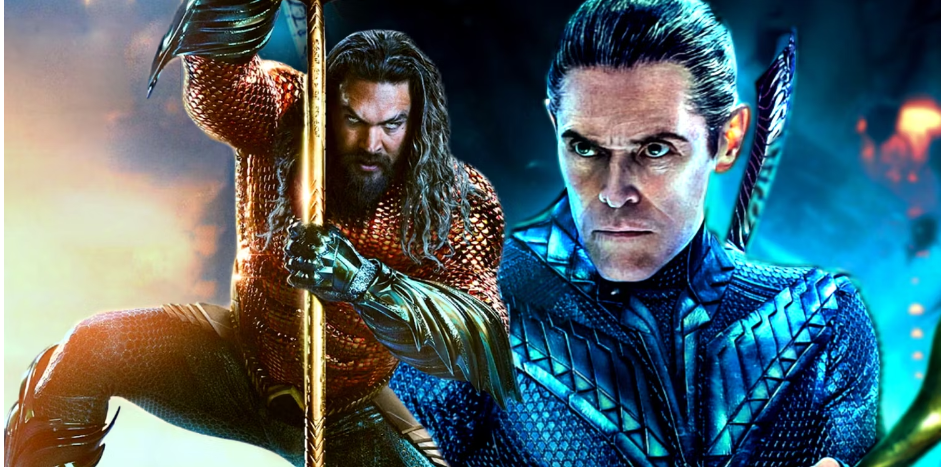
This element is a poignant reminder of the environmental themes prevalent in the Aquaman saga. It also adds an emotional layer to Arthur Curry’s journey, as he loses a mentor who played a crucial role in his ascent to kingship.
New Black Manta Suit Is Straight From The Comics
The sequel showcases Black Manta’s transformation with a new look that aligns closely with his comic book depiction. Shifting away from the all-black power suit, he now dons a silver helmet with iconic red eyes, emphasizing his evolution and the newfound powers bestowed by the Black Trident.
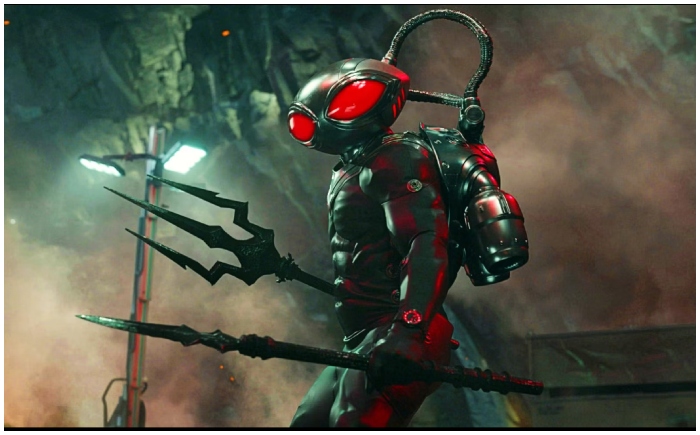
This change is a visual upgrade and a nod to the longstanding DC Comics fans, bringing a classic villain to life in a true way to the original material.
Topo The Octopus Is An Atlantean Spy (And Musician)
Topo, originally a musical sidekick in the first Aquaman film, is revealed to be much more than meets the eye in the sequel. He is an Atlantean spy, aligning with his classic comic origins.
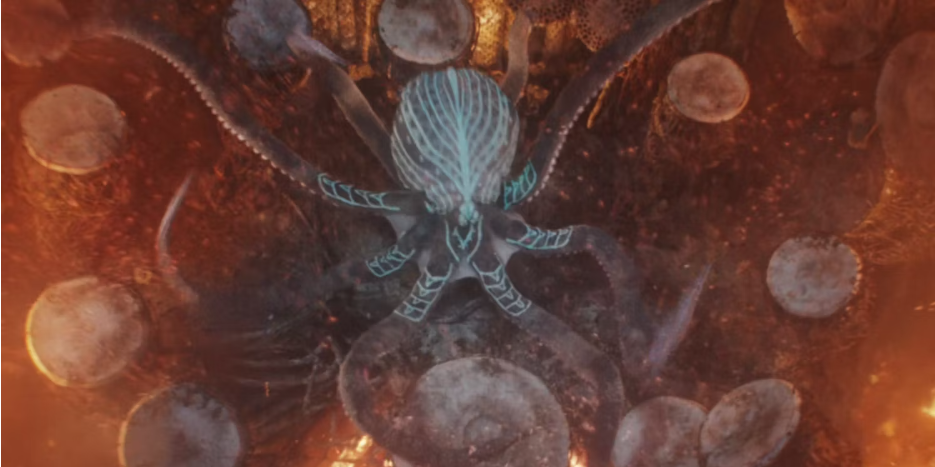
This revelation adds a layer of intrigue to the character. It pays homage to his roots in the comics, where he was more than just a quirky cephalopod but an ally with significant contributions to Aquaman’s adventures.
Karshon Receives New DCEU Origins and Role
Indya Moore’s portrayal of Karshon presents a dramatic reinterpretation of the comics. In the film, Karshon heads the Seven Kingdoms’ council, seeking to usurp Aquaman’s power.
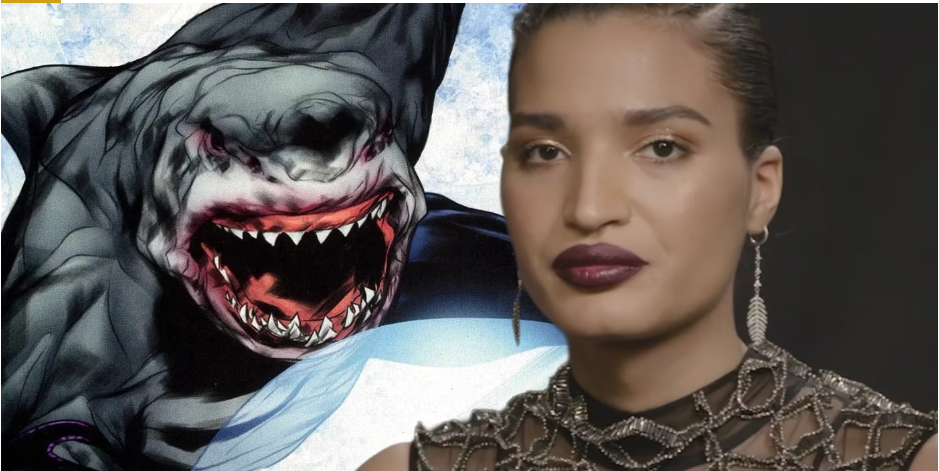
This contrasts starkly with the original comics, where Karshon is an anthropomorphized tiger shark and a nemesis to both Aquaman and Green Lantern. The DCEU’s reimagining of Karshon adds a fresh twist to the character, creating a unique and formidable adversary for Arthur Curry.
Aquaman’s Deserter Tribe
The movie explores the Deserter tribe guarding the Sahara desert prison, introducing a vampiric twist to their need for moisture. This reinterpretation differs from the comics, where the Deserters were one of the last kingdoms to join Atlantis under Atlan’s reign.
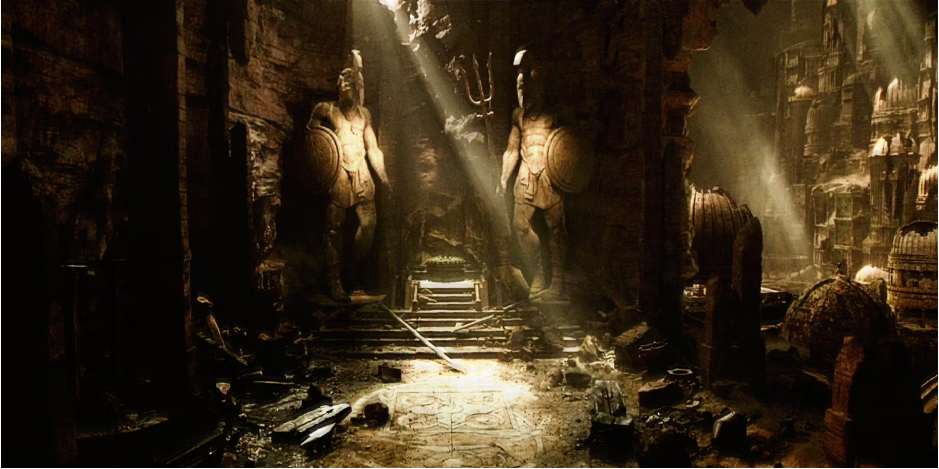
The film’s take on the Deserters adds a darker, more survivalist angle to their existence, diverging from their comic counterparts who had a more peaceful coexistence with humanity. This creative liberty taken in the film adds an element of surprise and expands the lore of the Aquaman universe.
Castaway And Wilson
In a humorous moment, Arthur Curry nicknames his half-brother Orm “Castaway,” about Tom Hanks’ character in the film of the same name. This comparison is drawn due to Orm’s similarly wild and unkempt appearance.
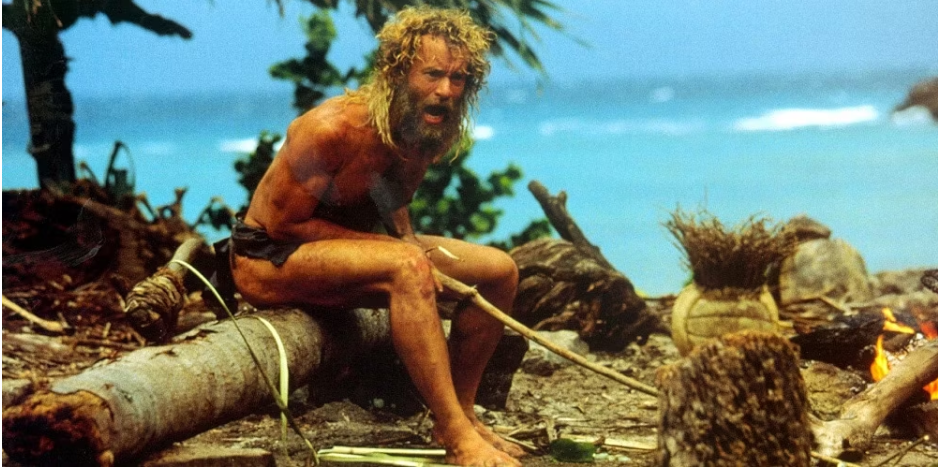
Additionally, Arthur makes a witty reference to “Wilson,” the volleyball in the film, by pointing to a discarded gun, infusing a bit of humor into their tense encounter. This clever nod lightens the mood and showcases Arthur’s quick wit and ability to find humor even in dire situations.
Kingfish (Voiced By Martin Short)
The Sunken Citadel, a pirate haven in the film, is overseen by Kingfish, a classic Aquaman villain brought to life through the voice of Martin Short. This casting choice adds a unique flair to the character, reminiscent of the memorable voice performances by John Rhys-Davies as the Brine King and Julie Andrews as the Karathen in the first Aquaman movie.
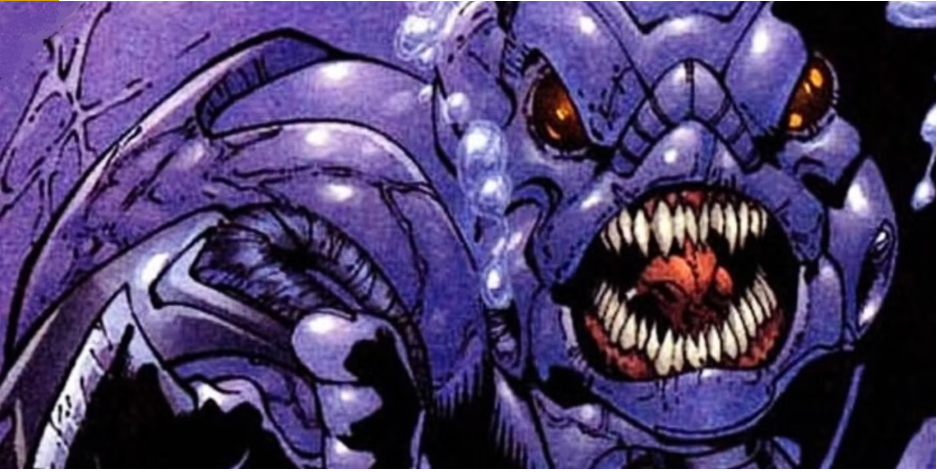
Martin Short’s involvement as Kingfish brings the character a distinct charm and charisma, enriching the film’s diverse and colorful personalities.
Refinery Resembling Legion of Doom
The orichalcum refinery used by Black Manta’s forces resembles the Hall of Doom, the notorious headquarters of the Legion of Doom from the comics and Super Friends series.

This architectural similarity, intentional or coincidental, is a subtle homage to the classic villain lair. It reinforces the theme of villainy and power struggles central to the Aquaman storyline, connecting the film to a wider array of DC lore.
Black Manta’s Revenge Inspired By Original Comics
Black Manta’s quest for revenge in the film mirrors his motivations in the original comics. His vendetta against Aquaman, sparked by his father’s death, leads to a series of dramatic confrontations.
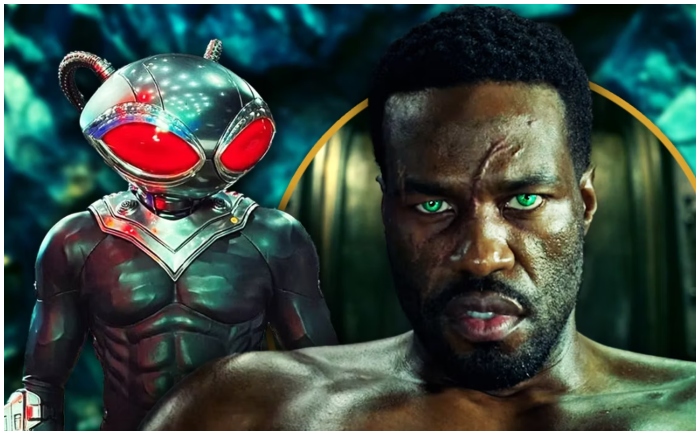
While the sequence of events differs slightly from the comics, the core elements of their rivalry and Black Manta’s relentless pursuit of revenge remain true to the source material, providing a deeper context for his character’s actions in the film.
Aquaman Calls Ocean Master Loki
During a heated debate about who should rightfully sit on the Atlantean throne, Aquaman teasingly calls his half-brother Orm “Loki.” This reference not only injects humor into their interaction but also draws a parallel between their relationship and that of Thor and Loki from Marvel’s universe.

The film further aligns with the themes of sibling rivalry and the complexities of familial bonds, reminiscent of Marvel’s “Thor” series, particularly the second installment, where a similar narrative of breaking out the villainous brother from prison unfolds.
Aquaman References Harry Potter’s Azkaban Prison
Aquaman’s reference to “Azkaban” during his argument with Orm is a clear nod to the infamous wizard prison from the Harry Potter series. This reference adds a layer of pop culture connectivity, appealing to fans of the Harry Potter franchise and demonstrating the film’s ability to blend different elements of popular culture within its narrative.
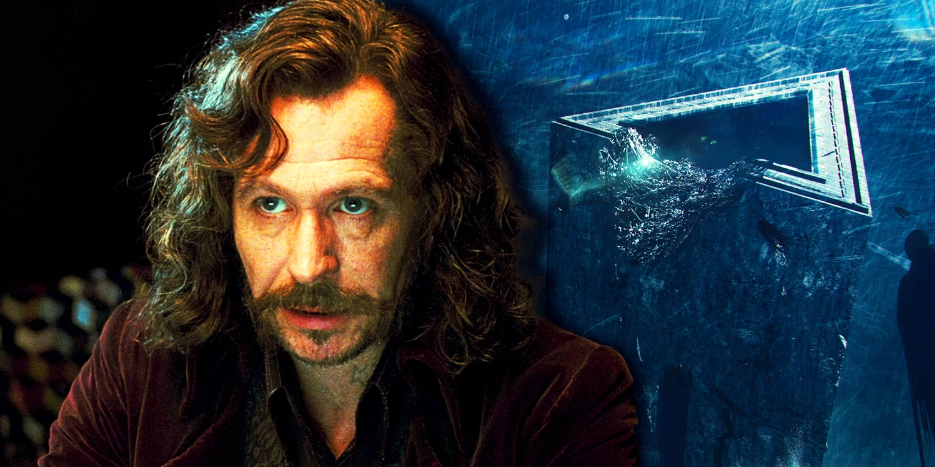
This moment is a lighthearted yet impactful reminder of the film’s wide-ranging influences and appeal to a broad audience.
“No Prep Time” Batman Reference
In a playful twist, Aquaman wraps up his argument with Orm by boasting about defeating him with “no prep time” in their first encounter. This line is a cheeky nod to the fan debates around Batman, suggesting that with sufficient preparation, the Caped Crusader could outmatch any adversary.

This reference adds a touch of humor and connects Aquaman’s universe to the broader DC lore, acknowledging the fan culture surrounding these iconic heroes.
King Kordax Of The Black City
Towards the end of “Aquaman & The Lost Kingdom,” King Kordax of Necrus emerges as the manipulative force behind Black Manta. Unlike his comic counterpart, where Kordax is an independent villain and Atlan’s brother is named Orin, this adaptation intertwines the two characters.
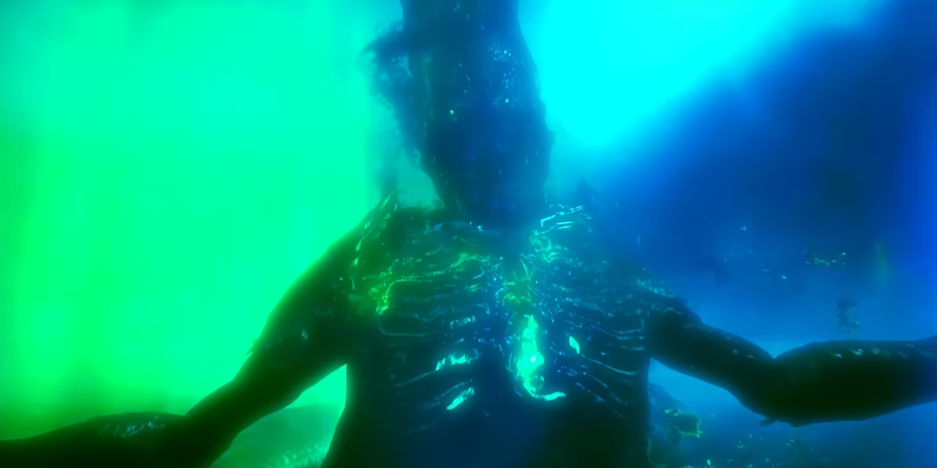
Pilou Asbæk, known for his role as Euron Greyjoy in “Game of Thrones,” brings a unique portrayal to Kordax, drawing parallels with his previous character, who also ruled over a maritime kingdom. This casting choice adds a layer of meta-textual depth to the character, enriching the narrative with Asbæk’s seasoned portrayal of a sea king.
“I Am Aquaman” Mirrors “I Am Iron Man”
The movie concludes with Arthur Curry boldly declaring, “I am Aquaman” at a United Nations press conference, echoing Tony Stark’s iconic “I am Iron Man” line from the Marvel Cinematic Universe.
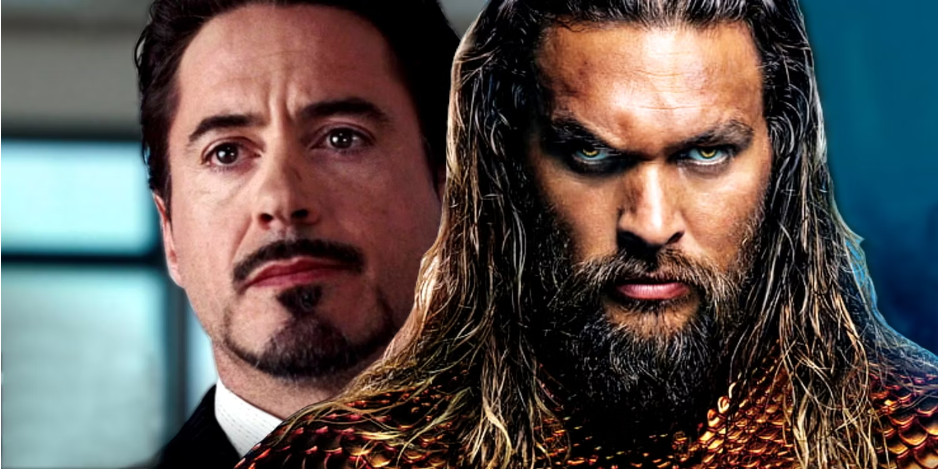
This parallel serves as a dramatic climax and highlights Arthur’s acceptance of his dual identity as a superhero and a king. The scene resonates with comic book movie fans, subtly comparing the journeys of these two iconic characters and their willingness to embrace their superhero personas publicly.
That Camouflage Suit Callback
“Aquaman and The Lost Kingdom” revisits a piece of profound DC Comics lore by featuring Aquaman’s blue camouflage suit, first seen in the 1986 “Aquaman” #1. This suit, known for its ability to blend underwater, contrasts with his classic orange and green outfit and has been a point of contention among fans.

The inclusion of this suit in the film, showcased in the trailer as Aquaman uses its technology to become invisible during a mission, signifies a tribute to the character’s rich comic history and caters to long-time fans.
Did You Miss Mera? Uh … We Did Too…
Amber Heard reprises her role as Mera, but her presence in the film and its promotional materials is notably scaled down. This change might be influenced by Heard’s highly publicized legal battles, leading to a reduced focus on her character.
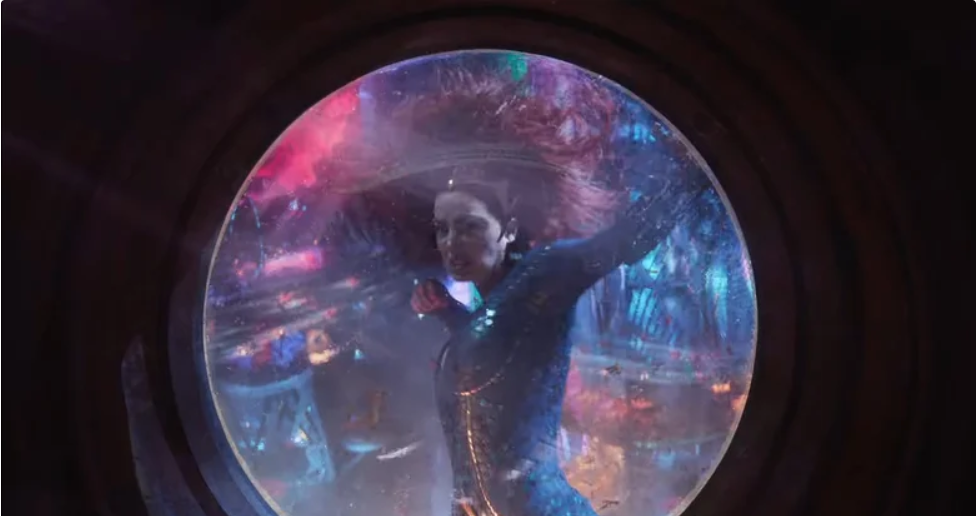
Despite being the mother of Arthur’s child, Mera’s role appears confined to a few quick scenes, emphasizing Arthur’s familial and political struggles over his romantic life. This shift suggests a new narrative direction focusing more on Arthur’s responsibilities as a king and a father rather than his relationship with Mera.
King Shark-Style Hammerhead Shark People
The trailer tantalizes with glimpses of hammerhead shark people, possibly hinting at a connection to King Shark, a character introduced in “The Suicide Squad.” While King Shark in the DCEU resembles a great white shark, he has a comic history with hammerheads.
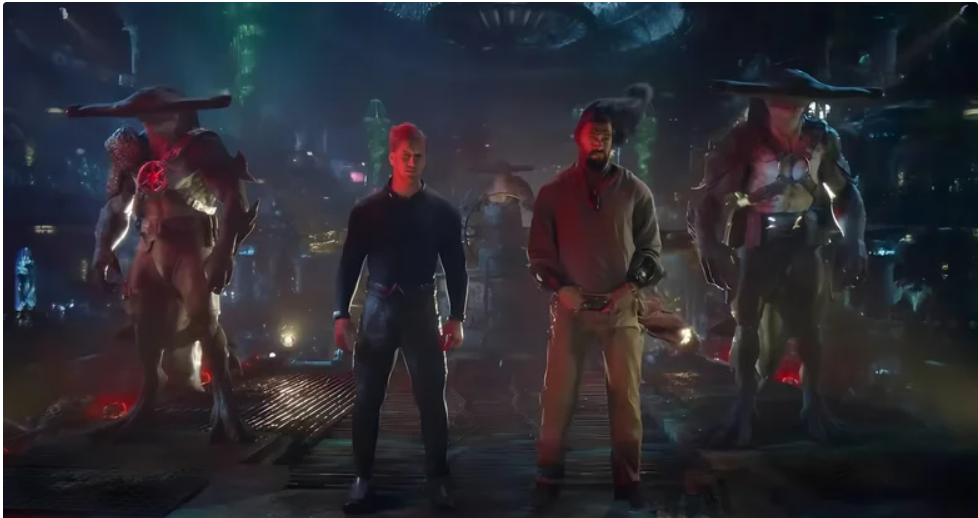
These new characters might explore more of his background, offering fans a deeper dive into the diverse aquatic life that populates Aquaman’s world. Even though a cameo from King Shark himself might be unlikely, these characters enrich the underwater universe and provide a nod to the broader DCEU.
Aquaman’s Employment Struggles Mirror Jason Momoa’s Own
This intriguing parallel connects Arthur Curry’s fictional struggles and Jason Momoa’s real-life challenges. The character’s reflection on his past as “unemployed” and “a wanderer with no home” in the trailer resonates with Momoa’s journey. After his role as Khal Drogo, Momoa faced a difficult period of unemployment, during which he struggled financially despite his rising fame.

This narrative choice in the film could be interpreted as an artistic reflection of Momoa’s personal trials, symbolizing his transformation from a struggling actor to a leading figure in the DCEU as Aquaman. This layer adds a personal and relatable aspect to the character, making Aquaman’s triumphs in the film more impactful as they echo the actor’s real-life successes.
How Black Manta Might Fridge Mera
The trailer’s ominous tone and Black Manta’s threats hint at a potential dark fate for Mera. In the context of the “fridging” trope, where female characters are harmed to advance a male character’s storyline, the limited appearance of Mera in the trailer raises concerns. If the film followed this path, it could be seen as a means to intensify Aquaman’s motivations against Black Manta.
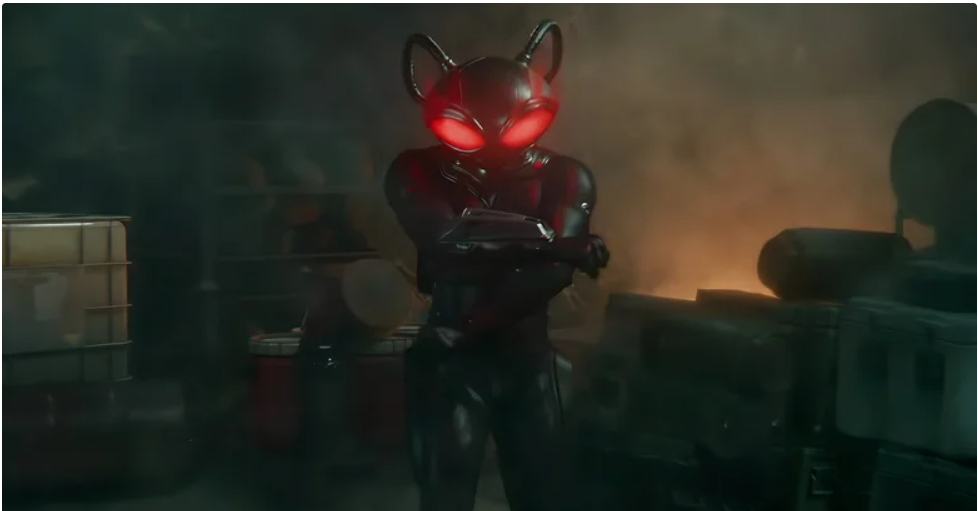
However, this narrative device is controversial and criticized for its treatment of female characters. The film’s approach to Mera’s character and her role in the unfolding events will be crucial in determining how the story balances action with character development.
James Wan is Channeling The Trench for a Horror-Filled Aquaman Story
The sequel’s trailer suggests a significant horror influence, likely stemming from James Wan’s background and his original plans for “The Trench.” The presence of zombified Atlanteans and darker thematic elements indicate a shift towards a more horror-centric approach.
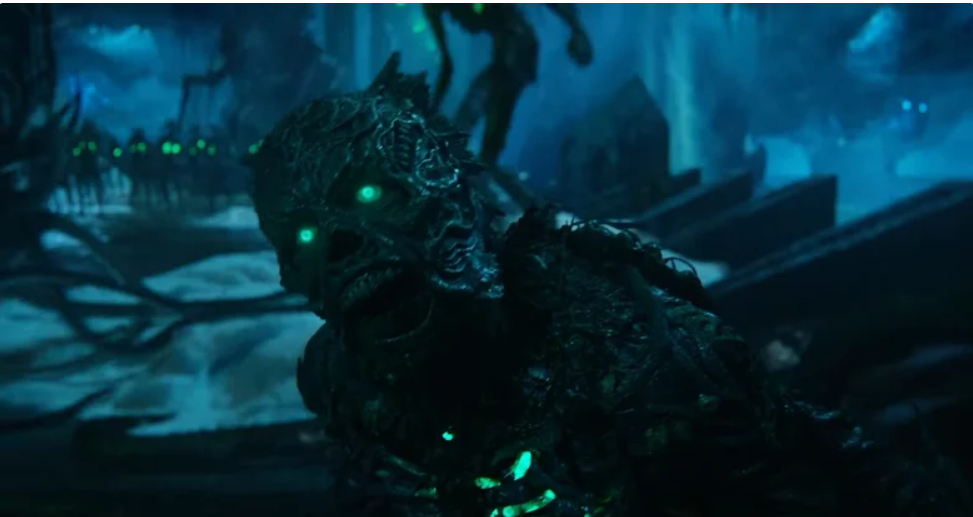
This direction allows Wan to explore the more terrifying aspects of the Aquaman universe, potentially bringing to life some concepts from the canceled “The Trench” project. By incorporating these elements, the film offers a unique blend of superhero action and horror, showcasing Wan’s versatility as a filmmaker and enriching the Aquaman narrative with a new, eerie dimension.
Jason Momoa has a Writing Credit on Aquaman 2
Jason Momoa’s involvement in the story development of “The Lost Kingdom” is significant. His “Story by” credit indicates a deep personal investment in the narrative, reflecting his understanding and connection to the character of Aquaman.
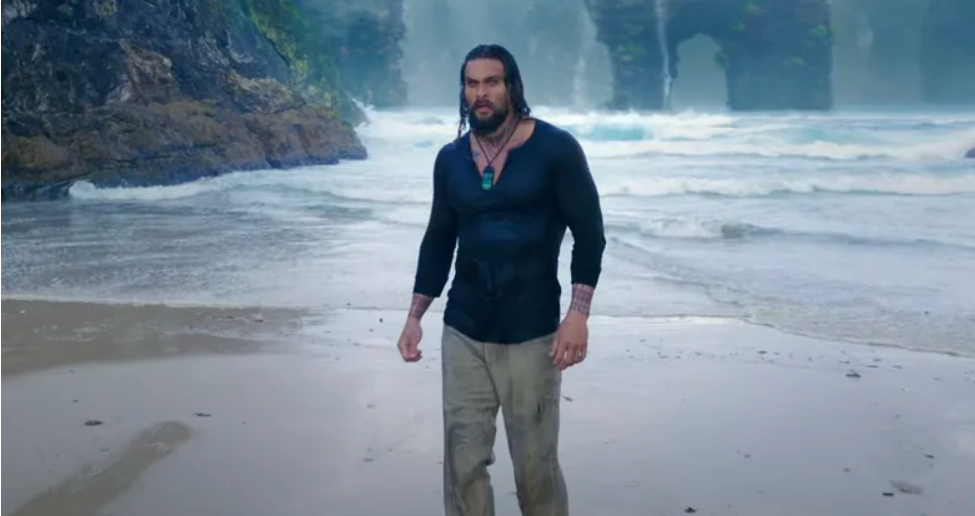
Momoa’s creative contributions, inspired by his vision for the sequel, add a unique authenticity to the film. His active role in shaping the story likely infuses the film with elements that resonate strongly with the character and the actor, potentially leading to a more cohesive and passionate portrayal of Aquaman.
Is that a Mecha Manta Tease?
The “Aquaman and The Lost Kingdom” trailer presents an intriguing possibility with Black Manta’s new powers and equipment. Around the 0:52 mark, the trailer shows him entering a vessel that might be an adaptation of the Mecha Manta, a formidable addition from recent comics. Introduced in “Aquaman” Vol. 8 #51 (2019), the Mecha Manta is a unique blend of AI and formidable weaponry, representing Black Manta’s deceased father’s thoughts.
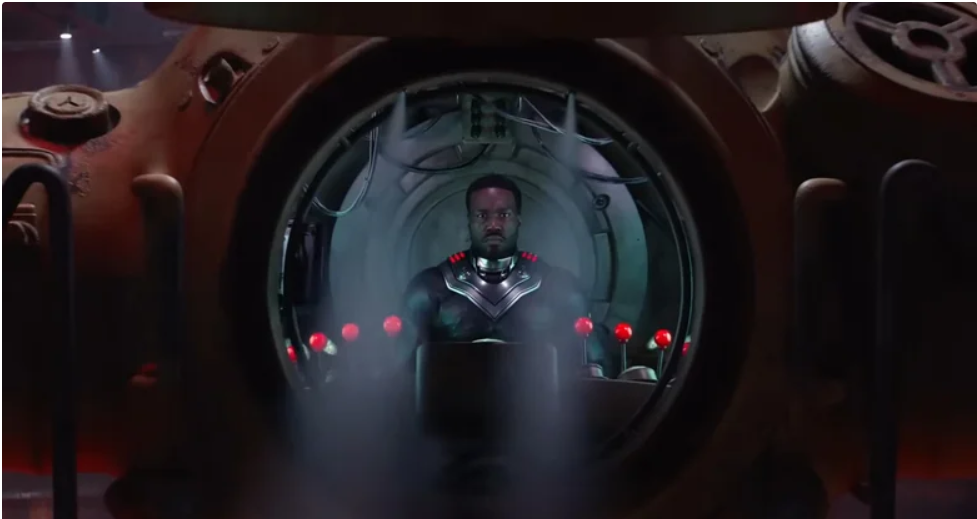
This complex addition could add depth to Black Manta’s character, intertwining his quest for revenge with the emotional weight of his father’s legacy. The Mecha Manta’s inclusion would enhance the action and enrich the narrative with themes of familial ties and the burdens of the past. However, the true nature of this vessel and its role in the film’s storyline remains speculative, leaving room for surprises and new developments in Black Manta’s character arc.
The Aquaman Trailer Emphasizes Bromance
The trailer for “Aquaman and The Lost Kingdom” highlights the evolving dynamic between Arthur Curry and his half-brother Orm. This signifies a shift from their adversarial past to a more complex, brotherly relationship. This unexpected alliance forms the crux of the narrative, injecting elements of humor and tension into their interactions. The portrayal of this ‘bromance’ is a departure from typical superhero narratives that often focus on external conflicts, instead bringing an internal, familial struggle to the fore.
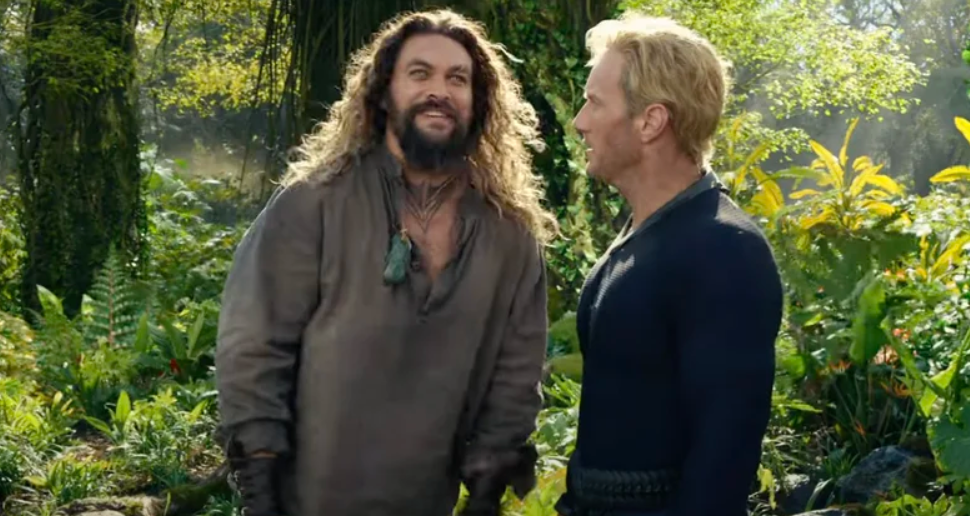
The chemistry between Jason Momoa and Patrick Wilson adds a layer of authenticity to their relationship, exploring themes of redemption, trust, and the challenging path to reconciliation. This focus on brotherhood provides a more humanized and relatable aspect to the characters, potentially offering audiences a deeper emotional connection to their journey. The development of this relationship is likely to be a key element in the film, providing a unique perspective on the complexities of familial bonds within a high-stakes, action-packed setting.